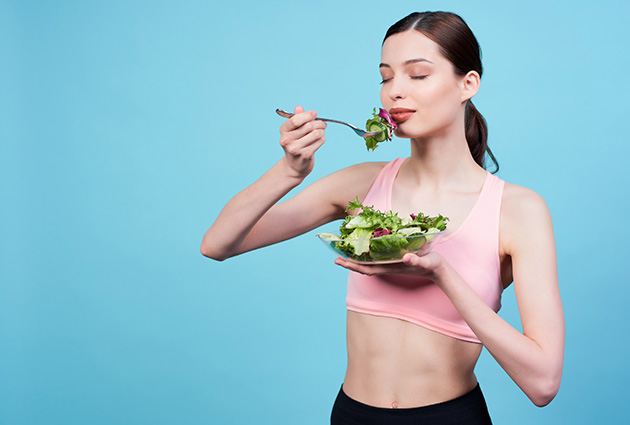
What are the health effects of a raw-food diet? What are the potential risks? These are reasons to consider raw food. Raw food has its benefits, but it also has its downsides. To make a raw-food diet work, you need to be willing to spend a lot. It is well worth the investment in the long term. A raw food diet offers more benefits than disadvantages.
Raw food recipes
Many raw food diet recipes are made from fruits and vegetables. These meals are excellent for breakfast as they are extremely palatable. These meals are even more appealing if you add a bit cheese or nut butter. Smoothies are an excellent way to get this diet while still enjoying all your favourite comfort foods. You can mix a variety of ingredients into a smoothie.
The downside of eating raw foods is that you have limited options for food and are responsible for the preparation of these foods. The food preparation and cooking process will bore you. Although it may not cause any harm in the short term it can be very detrimental long-term. Your diet should include fresh, natural foods. These are just a handful of the many advantages of eating a raw diet. It is possible to try it for a week, then return to your regular eating habits.

Health benefits
You might be curious about raw foods and their health benefits. Although it may seem obvious, there are many benefits to raw food. One benefit is that you will have more energy. You may notice a difference in your skin's clarity and alertness. It could even help you lose weight. However, there are a few things to consider before you start a raw food diet. Avoid raw animal products if you have problems with your digestion.
You should ensure that you are choosing organic and local food when making your daily food choice. Non-organic produce is best avoided as they are often full of pesticides and other toxic substances. Avoid eating raw meat if you plan to eat it. It can harbour parasites or bacteria. While fruitarians might have many health benefits, the best raw food diet for them is one that is 100% fruitarian.
Health risks
Raw meat, fish and poultry pose numerous health hazards. Raw animal products are high in bacteria and can also be contaminated with harmful toxins. Raw meats like chicken, pork, beef and other poultry can be hazardous. Raw meats are generally safe. However you should wash your fruits and veggies thoroughly before consuming them. Moreover, eating raw meat can lead to stomach complications and even serious infections. You should consider these risks before you start a raw-meat diet, especially if you are pregnant or have young children.
CDC estimates that Salmonella is responsible for more food-borne illnesses than any other bacteria, including those caused by chicken. One in 25 packaged chickens from grocery stores has been found to be contaminated. Raw chicken can cause food toxicity, whether the chicken has been contaminated during processing or by contaminating surfaces such as the refrigerator or kitchen. Remember that chicken juices can also contaminate other foods, so it is important to keep your chicken cooked properly.

Prices
Depending on how you prepare your meals, the cost of eating a raw diet can add up quickly. It is easy to spend a lot on superfoods, organic foods, and supplements. You might end up spending a lot more than you planned. Here are some tips to make your raw food meals affordable. Choose food that's in season. This will reduce food waste and increase your meals' nutritional value. A second thing to do is shop in bulk. For large orders, many stores offer bulk discounts.
A great way to save money on raw food is to buy organic groceries. Raw food is often less expensive than cooked food. Raw foods are better for your pet's health, but can be more costly than cooking. Raw meals are more time-consuming to prepare than cooked meals. There are many things that you can do to make your food more nutritious. Premade meals can also be bought whole, which can save money and time.
FAQ
What are 10 healthy habits?
-
Eat breakfast every day.
-
Don't skip meals.
-
You should eat a balanced diet.
-
Get lots of water.
-
Take care to your body.
-
Get enough sleep.
-
Avoid junk food.
-
Daily exercise
-
Have fun
-
Make new friends.
Supplements and herbs can improve immunity
Herbs and natural remedies can be used to boost immune function. Some common examples include garlic, ginger, oregano oil, echinacea, ginkgo biloba, and vitamin C.
These herbs should not be considered as a substitute for conventional medical treatment. Side effects include nausea, dizziness and stomach cramps.
What should my weight be for my age and height? BMI calculator and chart
The best way to determine how much weight you need to lose is to use a body mass index (BMI) calculator. The healthy BMI range for a healthy person is 18.5 to 24.9. You should lose about 10 pounds each month if you are trying to lose weight. Simply enter your weight and height into the BMI calculator.
This BMI chart can help you find out if or not you are obese.
What is the problem of BMI?
BMI stands for Body Mass Index, which is a measurement of body fat based on height and weight. Here is how to calculate BMI using the following formula.
Weight in kilograms divided by height in meters squared.
The result can be expressed as a number, ranging from 0 through 25. Scores between 0 and 25 indicate obesity. Scores higher than 18.5 are considered overweight. Scores higher than 23 are considered obese.
A person of 100kg with a height of 1.75m will have 22 BMI.
Do I have to count calories?
You may wonder, "What diet is best for you?" or "is counting calories necessary?" The answer to this question depends on many factors, including your current health, your personal goals and preferences, as well as your overall lifestyle.
Which one is right for you?
The best diet for me depends on my current health status, my personal goals, my preferences, and my overall lifestyle. There are many options, both good and bad. Some are better for certain people than others. What can I do to make the right choice? How do I make the right decision?
These are the questions this article will answer. This article begins with a brief overview of the various types of diets that are available today. Then, the pros and cons of each type of diet are discussed. Finally, we'll discuss how to select the best one.
To begin, let's take a quick look at the different types of diets.
Diet Types
There are three types, low-fat, high-protein, or ketogenic diets. Let's talk about them briefly.
Low Fat Diets
A low-fat diet is a diet that reduces the amount fats consumed. This is done through reducing the intake of saturated fats (butter, cream cheese, etc.) These fats can be replaced with unsaturated fats like avocados and olive oil. For those looking to lose weight quickly, a low fat diet is often recommended. This type of diet can lead to constipation and heartburn as well as indigestion. In addition, it may lead to vitamin deficiencies if a person doesn't get enough vitamins from their food.
High Protein Diets
High protein diets are known to restrict carbohydrate intake and promote the consumption of protein. These diets have higher protein levels than other diets. These diets are intended to increase muscle mass and reduce calories. One problem is that they may not provide adequate nutrition to someone who needs it. They are not suitable for all people because they can be restrictive.
Ketogenic Diets
Ketogenic diets are also known as keto diets. They are high-fat and low in carbs and protein. They are commonly used by athletes and bodybuilders as they allow them to train harder, longer and without feeling fatigued. However, they must be used with caution to avoid nausea, headaches and fatigue.
What's the best diet?
There are many factors that influence the best diet, including your gender, age, weight, health condition, lifestyle, and personal preferences. Consider how much energy and low-calorie foods you consume, as well as whether or not you are a fan of fruits and vegetables.
Intermittent Fasting is an alternative to traditional fasting if you are looking to lose weight. Intermittent fasting involves consuming only specific meals throughout the day, rather than having three large meals. You may find that this method works better for you than traditional diets that include daily calorie counts.
Some studies have suggested that intermittent fasting might improve insulin sensitivity. It may also reduce inflammation. This can lead to a reduction in blood sugar levels, and less risk of developing type 2 diabetes. Other studies suggest that intermittent fasting could promote fat reduction and improve overall body structure.
How do you measure body fat?
A Body Fat Analyzer (BFA) is the best method to measure bodyfat. These devices are used to measure the percentage of bodyfat in people who desire to lose weight.
Statistics
- According to the 2020 Dietary Guidelines for Americans, a balanced diet high in fruits and vegetables, lean protein, low-fat dairy and whole grains is needed for optimal energy. (mayoclinichealthsystem.org)
- In both adults and children, the intake of free sugars should be reduced to less than 10% of total energy intake. (who.int)
- This article received 11 testimonials and 86% of readers who voted found it helpful, earning it our reader-approved status. (wikihow.com)
- WHO recommends reducing saturated fats to less than 10% of total energy intake; reducing trans-fats to less than 1% of total energy intake; and replacing both saturated fats and trans-fats to unsaturated fats. (who.int)
External Links
How To
27 steps to a healthy lifestyle if your family only eats junk food
Cooking at your home is one of the easiest ways to eat healthier. However, this is often difficult because people do not know how to prepare healthy meals. This article will provide some helpful tips for making healthier dining out choices.
-
Look for restaurants that offer healthy choices.
-
Before ordering meat dishes, order salads and other vegetables.
-
Ask for sauces with no added sugar.
-
Avoid fried food.
-
Grilled meats are better than fried.
-
Don't order dessert unless your really need it.
-
After dinner, make sure you have something to eat.
-
Eat slowly and chew thoroughly.
-
When you eat, drink plenty of fluids.
-
Do not skip breakfast or lunch.
-
Have fruit and veggies with every meal.
-
Consider drinking milk instead of soda.
-
Try to avoid sugary drinks.
-
Limit salt intake in your diet.
-
Limit the amount of time you eat at fast food restaurants.
-
If you can't resist temptation, ask someone to join you.
-
Don't let your children watch too much TV.
-
When you are eating, keep the TV off.
-
Do not drink energy drinks.
-
Regular breaks from work are important.
-
Get up earlier in the morning to exercise.
-
Every day, exercise.
-
Start small and increase your knowledge slowly.
-
Set realistic goals.
-
Be patient.
-
You can exercise even when you don't feel like doing it.
-
Positive thinking is key.